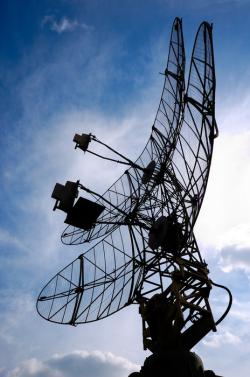Specialization profile--Microwave sensing and radar
The profile Microwave Sensing focuses on education on physical and signal processing foundations of remote sensing exploiting electromagnetic waves in a number of societal important applications. It covers propagation and scattering of electromagnetic waves by natural and man-made objects, principles & designs of electromagnetic sensors for near-, intermediate- and far-field sensing, as well as the physical model based algorithms and methods that enable the detection and parameter estimation of objects from measured electromagnetic fields. Special attention is given to such areas as array antenna systems and radar front-ends (beamforming in conventional phased arrays and distributed MIMO systems, imaging), waveform agility (adaptive selection of the most efficient sensing waveforms such as e.g. LFM, OFDM, UWB and space-time coded sequences), signal and data processing algorithms for advanced object detection, classification and tracking.
The application areas considered in this profile range from (phased array) Radar and distributed Radar systems in far-field to microwave vision in intermediate- and near-fields including medical imaging (High-field MRI).
For this profile, compulsory courses are:
EE4C05 Electromagnetics
EE4565 Propagation and Scattering of EM waves
ET4169 Radar I: From Basic Principles to Applications
ET4175 Radar II: Theory and System Design
Suggested courses
| EE4016 | Antenna systems | 5 EC | details | ||
| EE4510 | Advanced electromagnetics | 5 EC | details | ||
| EE4565 | Propagation and scattering of electromagnetic waves | 5 EC | details | ||
| EE4620 | Spectral domain methods in electromagnetics | 4 EC | details | ||
| EE4675 | Object classification with radar | 4 EC | details | ||
| EE4715 | Array processing | 5 EC | details | ||
| EE4C05 | Electromagnetics | 5 EC | details | ||
| EE5020 | Sensor signal and data processing | 4 EC | details | ||
| ET4169 | Radar I: From basic principles to applications | 5 EC | details | ||
| ET4173 | Introduction to UWB technology | 4 EC | details | ||
| ET4175 | Radar II: Theory and system Design | 4 EC | details |
MSc project proposals
Some examples of thesis topics (this list is not exhaustive):| SPS | Detecting Edge Changes in Networks via Graph Signal Processing |
|---|---|
| Will High-Mobility Modulations Open Up the Ocean? | |
| Occupancy mapping for automotive applications |
Thesis examples
| 2016 | Wilfred Boelhouwer | A Reconfigurable Antenna based on a Non-radiative Dielectric Waveguide with a Liquid Crystal Dielectric |
|---|
Contact person
For more information about the research group, possible thesis topics, and suggestions for your ISP:prof.dr. Olexander Yarovoy
Microwave Sensing, Signals and Systems Group
Department of Microelectronics
